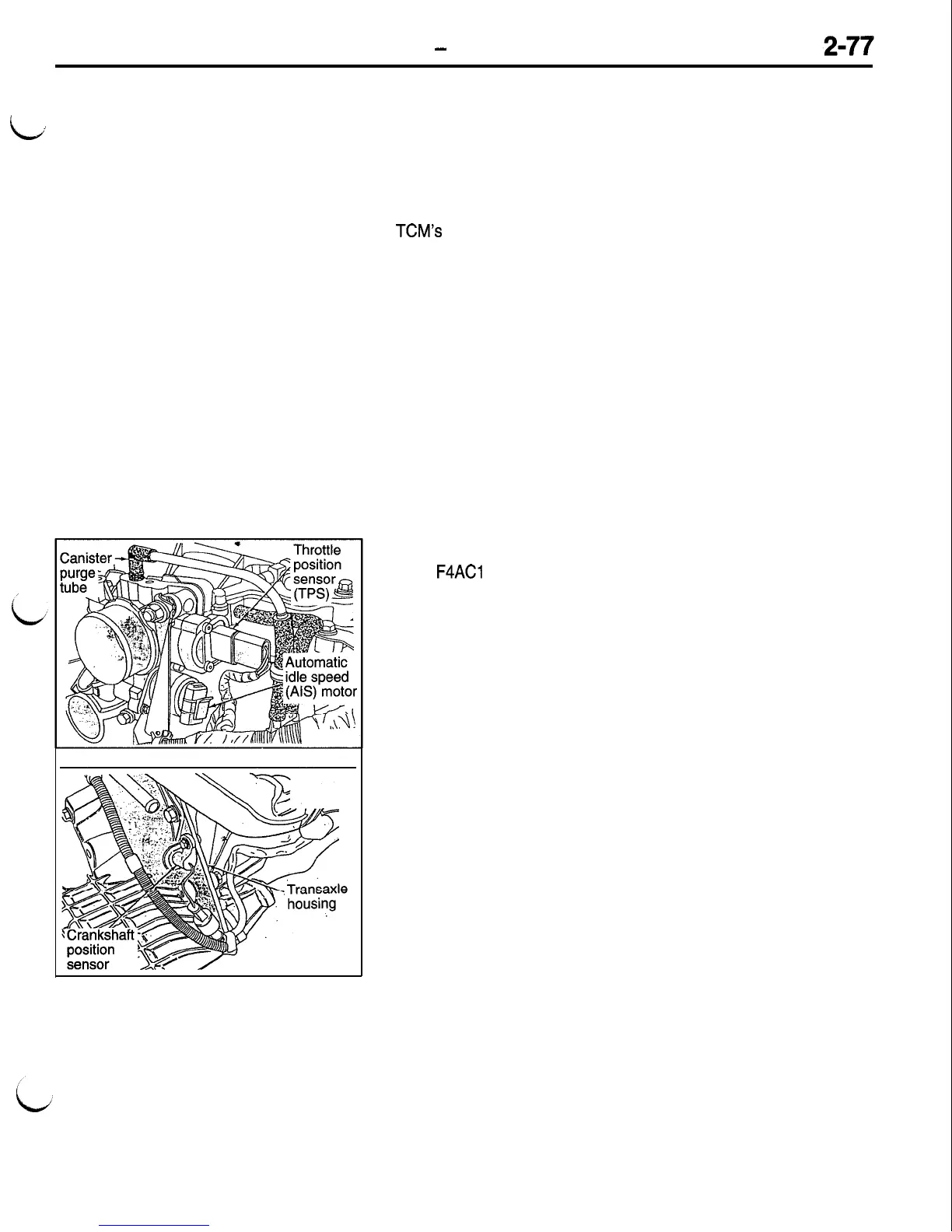POWER TRAIN
-
Automatic Transaxle
TRANSMISSION CONTROL MODULE INPUTS AND SENSORS
L
The TCM must depend on receiving information
’
in order to control shift quality. Let’s take a look
Direct Battery Voltage
There is constant battery voltage supplied to the
TCM, even when the ignition is turned off. This
battery supply is responsible for keeping the
TCM’s
memory alive. If the TCM loses battery voltage at
Ignition Voltage
When the ignition switch is turned to the OFF (col-
umn unlock), the RUN (on), or the Start (crank)
positions, the TCM is activated and looks at incoming
voltage. If the voltage is above approximately 24
volts or below eight volts, the TCM automatically
puts itself in default. Either voltage condition could
damage the TCM.
When the TCM is activated, besides checking the
incoming voltage level, it performs a self-test to
determine if the transmission control relay and the
solenoid assembly are performing as they should.
at what information it receives and how it uses that
information.
any time, it will lose the adaptive memory and have
to re-learn the characteristics of the transaxle for
optimum shift quality.
If the self-test results are good, the TCM sends
battery voltage to the transmission control relay.
The relay closes its internal contacts which supply
battery voltage to the TCM, the four solenoids and
the three pressure switches in the solenoid assem-
bly. Whenever the TCM goes into default, it de-ener-
gize the transmission control relay and prevents
the solenoids from functioning. The solenoids will
then be in de-energized positions, which cause the
transaxle to shift into second gear.
Throttle Position Sensor
The
F4ACl
does not use throttle pressure to control shift points
like previous transaxles did. Instead, an electronic signal from
the Throttle Position Sensor is used by the TCM to help deter-
mine shift points and shift quality.
Engine Speed Signal
Engine speed is supplied to the TCM from the engine crankshaft
position sensor or distributor, depending on the engine and
ignition system used. This signal not only lets the TCM know
the engine is running, but also lets the TCM calculate engine
speed to control torque converter clutch engagement, deter-
mine torque capacity, etc.

